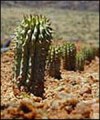
It’s usually fairly easy to justify even the most esoteric of scientific research in terms of improving our fundamental understanding of the universe etc etc. But, when a press release pops up announcing that drinking [alcohol] can be dangerous and that “People who drink alcohol are up to four times more likely than non-drinkers to be hurt from physical injuries such as a fall or punch…” you begin to wonder about your convictions. Apparently, this astounding discovery was made by researchers at the University of Queensland, Australia, who found that, “any alcohol consumption quadrupled the risk of injury for the first six hours after drinking alcohol and this risk remained at 2.5 times that of a non drinker for the next 24 hours.”
Do you have to have had a drink to be punched, I guess the inhibition inhibiting effects of alcohol can make some people say more provocative things that might offend someone and land them in a fight, but what about someone having a few “tinnies” alone in an armchair watching Aussie soap opera Neighbours or listening to Kylie? Are they more likely to suffer an injury or more weirdly get punched.
Some people might say that if they’re really watching Neighbours or listening to Kylie they deserve all they get, but Kerianne Watt earned her PhD for also discovering that, “people who sustained serious injuries were more likely to have consumed beer and have been drinking in a licensed premises” and “Binge drinkers were more at risk of being injured than regular drinkers”.
“My findings suggest that it’s not a property of the beverage that increases aggression and risk of injury, it’s more a personality characteristic that is attracted to a certain type of alcohol,” Watt says.
I suppose the research can be justified in terms of understanding the nature of alcohol abuse and how it relates to injury rates and it probably is quite useful to know what kinds of drink are most associated with injury, but strewth this still feels like this should have been published in the Australian Journal of the Bleedin Obvious (Aus J Bleed Obv), don’t you think?
You can read the complete press release here.

 This southern African succulent plant tastes nasty but generations of San bushmen in the Kalahari Desert have eaten it to suppress their appetites on countless hunting trips. As such, it has become a focus of quick-fix weight loss programs.
This southern African succulent plant tastes nasty but generations of San bushmen in the Kalahari Desert have eaten it to suppress their appetites on countless hunting trips. As such, it has become a focus of quick-fix weight loss programs. Cranberries have a special place in modern herbal folklore, the presence of antioxidant flavonoids in these tart but edible berries are thought to have antimicrobial activity. Now, US researchers have demonstrated that the extracts of the red fruit can prevent Streptococcus mutans, the bacterium responsible for dental caries, from having its wicked way with your teeth and so potentially halt tooth decay.
Cranberries have a special place in modern herbal folklore, the presence of antioxidant flavonoids in these tart but edible berries are thought to have antimicrobial activity. Now, US researchers have demonstrated that the extracts of the red fruit can prevent Streptococcus mutans, the bacterium responsible for dental caries, from having its wicked way with your teeth and so potentially halt tooth decay. Belgian scientists today reiterated a warning that certain cases of asthma could be linked to swimming in stuffy “chlorinated” indoor pools but chemistry may have the answer, according to charity Allergy UK, which has awarded its ‘Seal of Approval’ to a novel alternative of which hot-tubbing ancient Greek philosopher Archimedes would be proud.
Belgian scientists today reiterated a warning that certain cases of asthma could be linked to swimming in stuffy “chlorinated” indoor pools but chemistry may have the answer, according to charity Allergy UK, which has awarded its ‘Seal of Approval’ to a novel alternative of which hot-tubbing ancient Greek philosopher Archimedes would be proud.